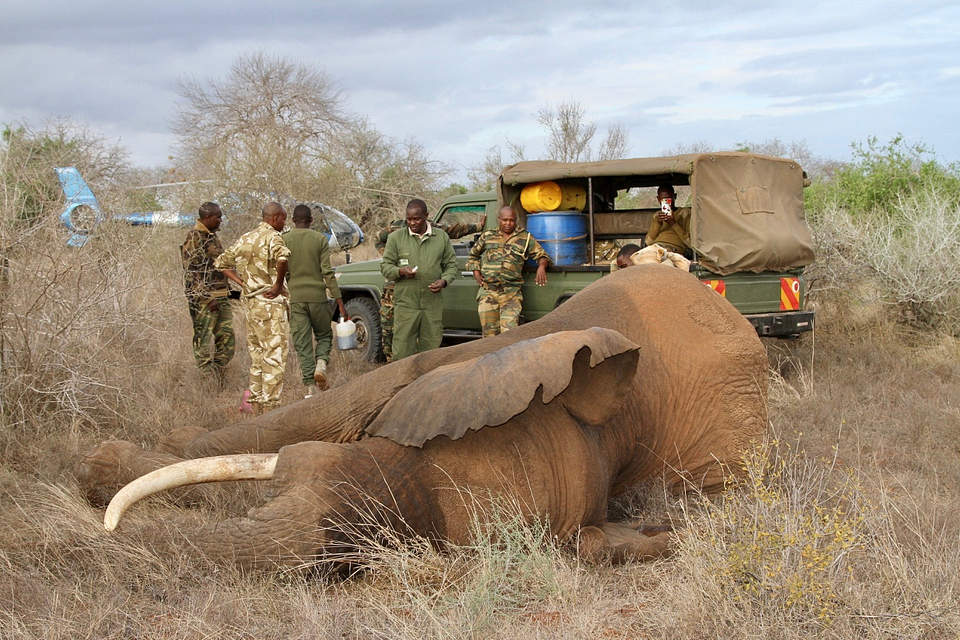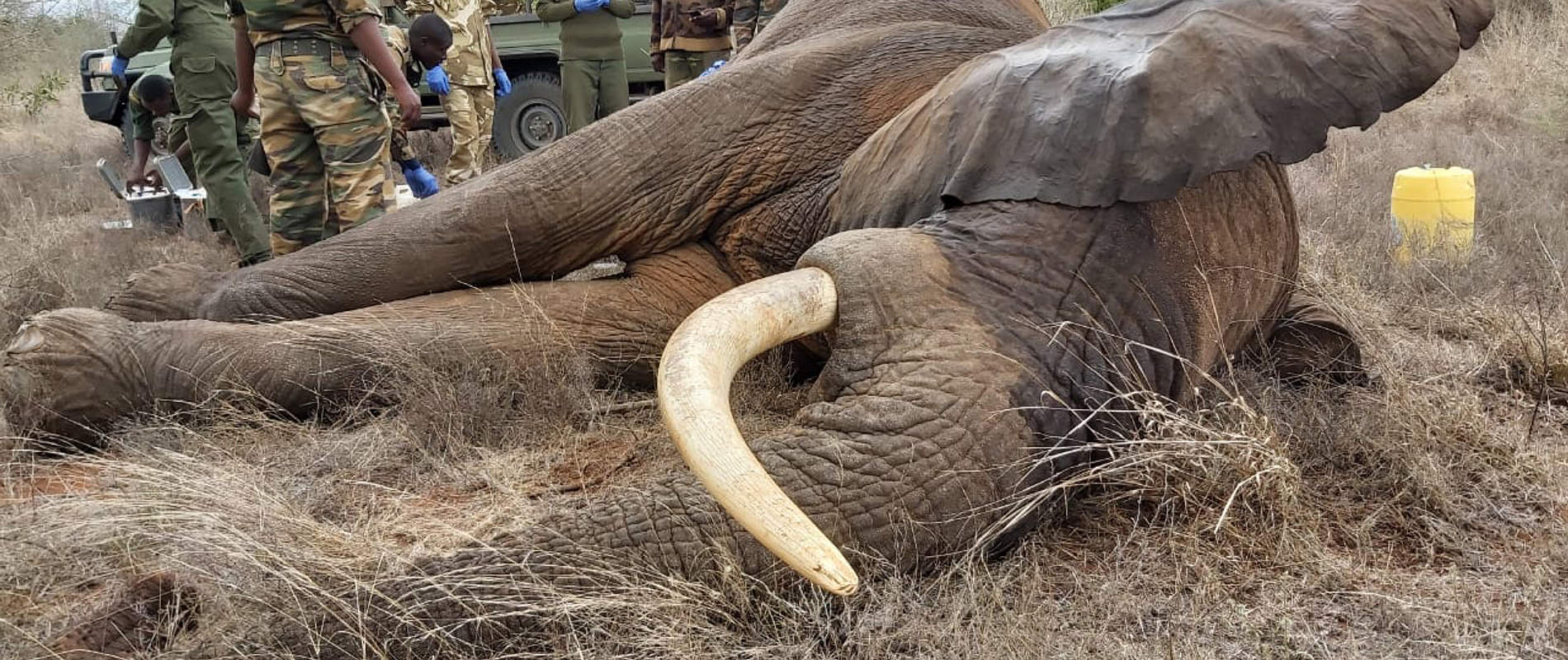For decades, a distinctive one-tusked bull has roamed the plains of Tsavo East. Earlier this week, he was spotted along the far eastern boundary of the park. An impressive elephant in his element is always a welcome sight, but this time, something was amiss: He was walking in an unusually effortful manner, dragging his rear leg behind him.
Immediately, it was suspected poaching was at play. During the dry season, many elephants retreat to Galana and Kulalu Ranches. This is a path they have trod for millennia, one that ultimately leads to the lush Arabuko Sokoke Forest on the coast of Kenya. However, human habitation has changed all that. Arabuko Sokoke remains a protected forest, home to some 300 elephants, but the area is fenced off for its own preservation. While Tsavo’s herds are now isolated from their coastal brethren, that does not stop them from traversing the migratory routes passed down through generations. When they leave the protection of the National Parks, they find themselves in a vulnerable position — especially now, when so many Kenyans are struggling and some are turning to deadly, illegal activities like poisoned arrow poaching.

Our SWT/KWS Tsavo Mobile Veterinary Unit was called upon to treat the bull, but due to failing light and the difficult terrain, the whole exercise was deferred to the following day. So, the morning of July 30th, one of the Trust’s pilots took to the skies to ascertain the elephant’s position. After he had been located, KWS and Galana Conservancy ground teams moved in while Dr. Poghon darted him from the air. The dense brush in the area presented an obstacle, so the SWT helicopter maneuvered the bull to a nearby clearing, where he succumbed to the anaesthetic.

It was a hot day, and as always, keeping the patient cool and calm was of paramount importance. The team lodged a stick in the opening of his trunk to keep airways open, then poured generous amounts of water behind his ears to keep his temperature down. Dr. Poghon, meanwhile, got down to work. It transpired that the source of the bull’s debilitation was a poisoned arrow, embedded deep into his rear leg joint. Dr. Poghon removed the arrow and thoroughly cleaned the wound. Given its location, the injury is grave, but with veterinary intervention and ability to provide follow-up treatment, we are hopeful that he will make a full recovery.

In two weeks’ time, we will conduct a second operation, where we will administer additional antibiotics to stave off infection. In the meantime, our aerial teams will continue to monitor the patient even from the air, his single tusk makes him instantly recognisable, which means it should be fairly easy to keep tabs on him. Because of this incident, KWS has bolstered their security patrols in the area outside the park, so they can ascertain where he fell victim to the poisoned arrow hunter.

This bull is another example of the pandemic’s toll on our natural world. Widespread loss of jobs and lack of income from the tourism industry has led to an increase in illegal activities, which we fear will only continue to rise in the coming weeks and months. While we are hopeful that this magnificent bull elephant will continue to preside over Tsavo for years to come, his story could have ended very differently — Working with the Kenya Wildlife Service and our field partners, we will continue to tirelessly monitor for poaching and other threats, and lend a helping hand to the creatures who find themselves caught in the crosshairs.
